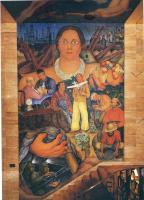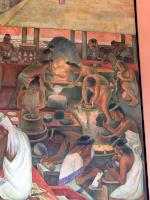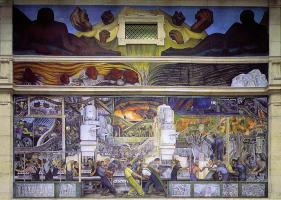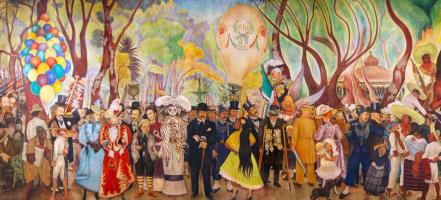Diego Rivera
Diego Rivera was a Mexican painter whose bold large-scale murals stimulated a revival of fresco painting in Latin America. Between 1922 qnd 1953, Rivera painted murals in, amopng other places, Mexico City, Chapingo, Cuernavaca, San Francisco, Detroit and New York City.
A government scholarship enabled Rivera to study art at the Academy of San Carlos in Mexico City from age 10, and a grant from the governor of Veracruz enabled him to continue his studies in Europe in 1907. He studied in Spain and in 1909 settled in Paris, where he became a friend of Pablo Picasso, Georges Braque, and other leading modern painters. About 1917 he abandoned the Cubist style in his own work and moved closer to the Post-Impressionism of Paul Cézanne, adopting a visual language of simplified forms and bold areas of colour.
On returning to Mexico, Rivera painted his first important mural, Creation, for the Bolívar Auditorium of the National Preparatory School in Mexico City. In 1923 he began painting the walls of the Ministry of Public Education building in Mexico City, working in fresco and completing the commission in 1930 . These huge frescoes, depicting Mexican agriculture, industry, and culture, reflect a genuinely native subject matter and mark the emergence of Rivera’s mature style. Rivera defines his solid, somewhat stylized human figures by precise outlines rather than by internal modeling. The flattened, simplified figures are set in crowded, shallow spaces and are enlivened with bright, bold colours. The Indians, peasants, conquistadores, and factory workers depicted combine monumentality of form with a mood that is lyrical and at times elegiac.
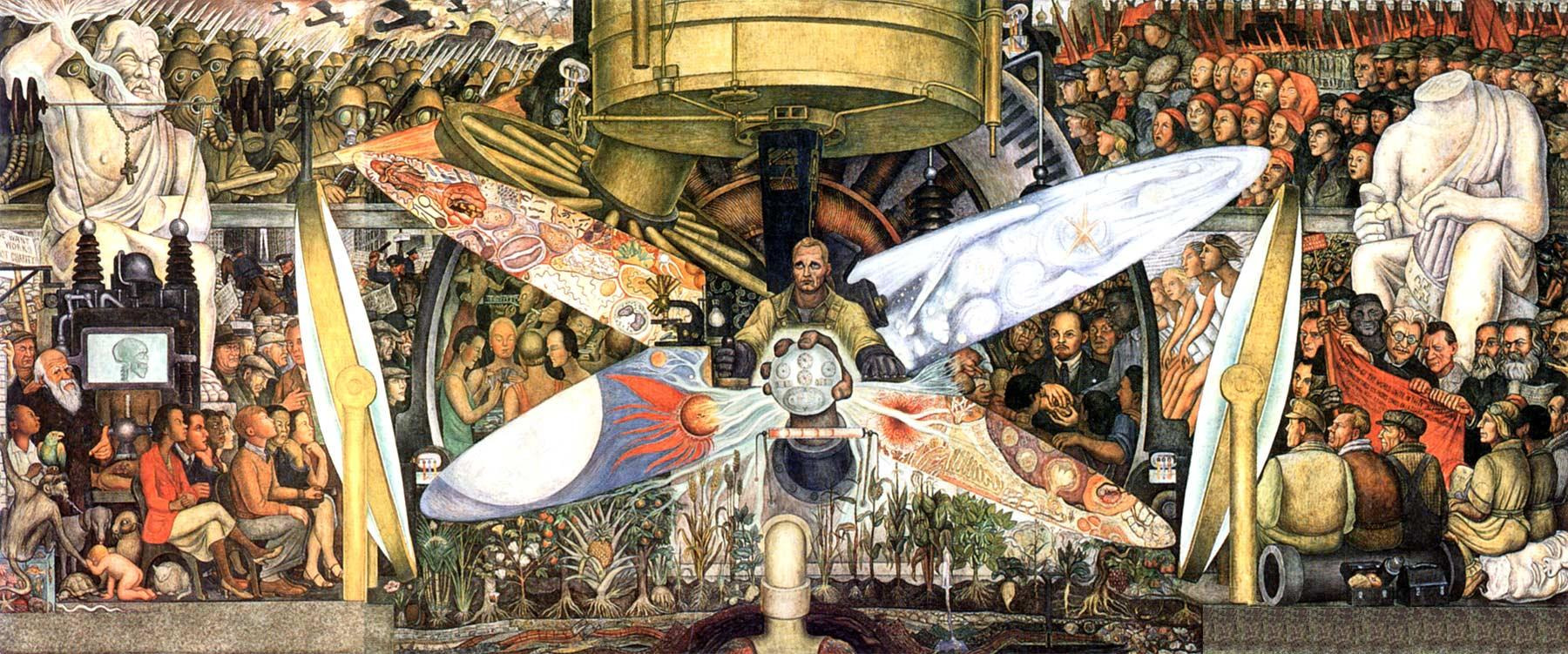 Man at the Crossroads was originally slated to be installed in the lobby of
the RCA Building at Rockefeller Center in New York City, the fresco showed
aspects of contemporary social and scientific culture. As originally installed,
it was a three-paneled artwork. A central panel, depicting a worker controlling
machinery, flanked by two other panels, The Frontier of Ethical Evolution and
The Frontier of Material Development, which respectively represented socialism
and capitalism.
Man at the Crossroads was originally slated to be installed in the lobby of
the RCA Building at Rockefeller Center in New York City, the fresco showed
aspects of contemporary social and scientific culture. As originally installed,
it was a three-paneled artwork. A central panel, depicting a worker controlling
machinery, flanked by two other panels, The Frontier of Ethical Evolution and
The Frontier of Material Development, which respectively represented socialism
and capitalism.
When it was discovered that Rivera had included a portrait of Lenin and a Soviet May Day parade in the fresco, the Rockefeller family ordered the fresco to be plastered over, thereby destroyed before it was finished.
Only black-and-white photographs exist of the original incomplete fresco, taken when Rivera suspected it might be destroyed. Using the photographs, Rivera repainted the composition in Mexico under the variant title Man, Controller of the Universe.


